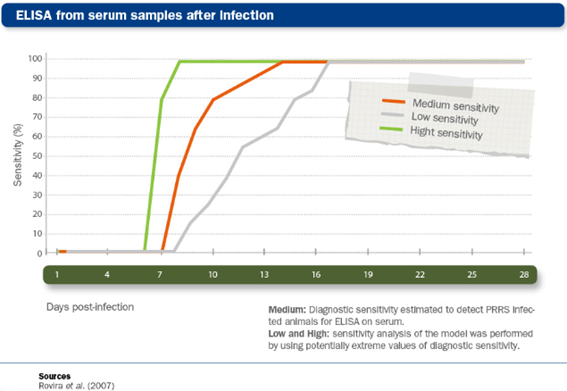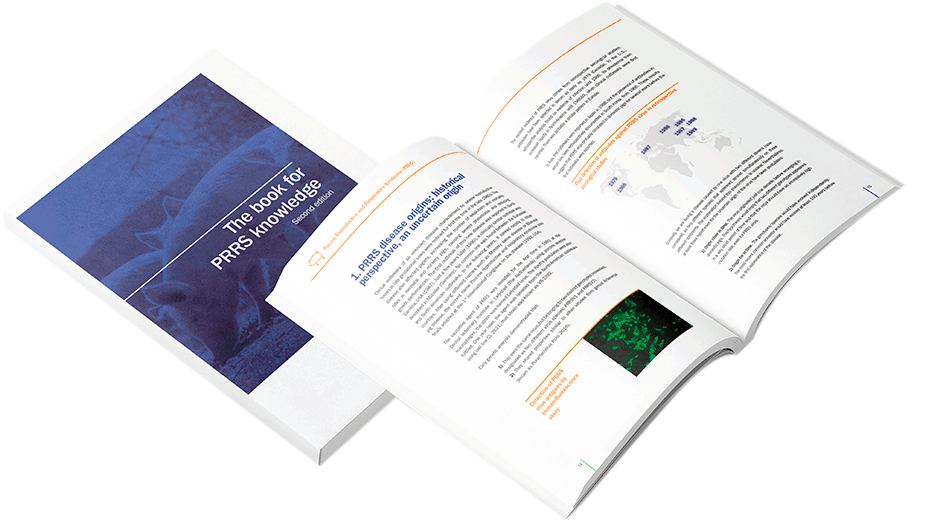If your herd tests positive for PRRS via ELISA but only 1 sample out of the 15 tested positive, what is the likelihood that it is a false positive? Can PRRS be transmitted to other pigs if you slaughter pigs and sell their raw meat in the open market? Must you cull all pigs if your country is free of PRRS?
PRRS ELISA tests are known for their imperfect specificity, often showing false positive reactions.
In a study published in 2018 the authors compared the performance of various ELISA kits: out of 139 truly negative sow sera (from 5 different farms) almost every kit they tested showed false positive reactions ranging from 12% of false positivity rate to none (Biernacka et al 2018.).
The results were mostly depending on the manufacturer of the assay and surprisingly by the farm where the sera were originating from. The results identified IDEXX X3 and Civtest HIPRA as the most specific tests with 0 false positivity rate. So it would be very important to know the kit used for the test.
In Hungary a second, confirmative IPMA or IFA test is performed on presumed false positive reactions by the National Reference Laboratory.

If a given country if free from PRRSV (or other major infectious animal disease) and the positivity is truly confirmed usually in an accredited reference laboratory, the actions should be determined by the official regulations. Most likely these include immediate trade restrictions and subsequent culling of the animals of the given farms. In the case of highly contagious diseases like foot and mouth disease, members of the susceptible species within a given radius (up to several kilometers) around the outbreak will also be culled to prevent the spread of the infection.
According to a study conducted in Canada, the authors found low residual quantities of PRRSV in a small percentage of pig meat collected at a pork ham boning plant over the course of two years (n = 1500) (Raymond et al. 2017). They also used previously frozen PRRSV-positive meat challenge SPF pigs by oral exposure. Transmission was more efficient for meat samples containing large amounts of PRRSV genome, around 109 genomic equivalents.
However, the prevalence of such meat samples was very low. Moreover, the virus will be inactivated at higher temperatures rather quickly. However, due to other infections like Aujeszky’s disease or Trichinella spiralis I absolutely suggest avoiding the contact of pigs with raw pork or other meat.
If you want to know more about diagnosis read out chapter: “Practical approach to diagnosis”
You can ask your own question! Visit Pig333.com and submit your question to the experts.
References:
Biernacka K, Podgórska K, Tyszka A, Stadejek T. Comparison of six commercial ELISAs for the detection of antibodies against porcine reproductive and respiratory syndrome virus (PRRSV) in field serum samples. Res Vet Sci. 2018 Dec;121:40-45. doi: 10.1016/j.rvsc.2018.10.005. Epub 2018 Oct 6. PMID: 30316015.
Raymond P, Bellehumeur C, Nagarajan M, Longtin D, Ferland A, Müller P, Bissonnette R, Simard C. Porcine reproductive and respiratory syndrome virus (PRRSV) in pig meat. Can J Vet Res. 2017 Jul;81(3):162-170. PMID: 28725105; PMCID: PMC5508380.




